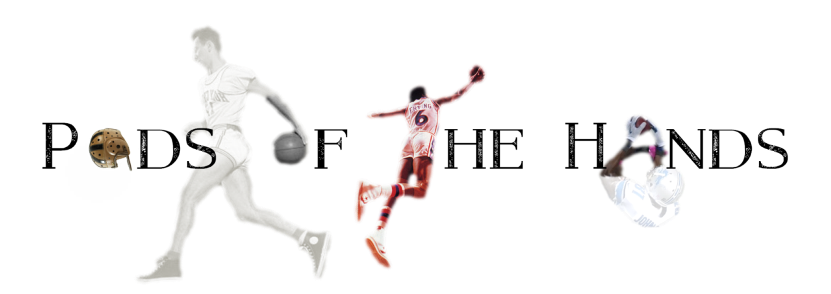Other authors have endeavored to examine icing the kicker. Some have reported that, in the NFL, calling a TO before a FG does not reduce the likelihood of making a FGA, whether controlling for FGA length or not. Other studies suggest suggests there is indeed an effect of reducing likelihood on longer NFL FGAs that is absent on shorter FGAs, when controlling for FGA length and other factors. At the collegiate level, it appears that icing the kicker may be effective on longer FGs; specifically, greater than 45 yards. However, this study had a small sample of iced kicks.
| This Many Attempted Fields Goals were | ||||||||
|---|---|---|---|---|---|---|---|---|
| Quarter | FG% | uFG% | Attempted | Made | Blocked | Home Attempts | Last 2min Attempts | ≤15s after TO Attempts |
| 1st | 0.727 | 0.753 | 7051 | 5123 | 248 | 3559 | 1129 | 468 |
| 2nd | 0.702 | 0.732 | 11473 | 8049 | 475 | 5957 | 4413 | 3264 |
| 3rd | 0.740 | 0.766 | 6629 | 4906 | 224 | 3417 | 1033 | 425 |
| 4th & OT | 0.715 | 0.747 | 7176 | 5129 | 308 | 3764 | 1566 | 1754 |
| TOTAL | 0.718 | 0.747 | 32329 | 23207 | 1255 | 16697 | 8141 | 5911 |
Let us start with blocked FGAs, though. Notably, as seen in Table 1, blocked FGAs were more likely to occur in the 2nd quarter and 4th quarter and OT (χ² = 12.3, p = 0.007)—the situations in games most relevant to icing the kicker. Longer FGAs were more likely to be blocked regardless of the quarter (p < 0.001). FGAs were also more likely to be blocked in the last 2 minutes of quarters and OT, but especially in the last 2 minutes of the 4th quarter and OT (p = 0.06). For these reasons, we shall include in our analyses only unblocked FGAs. This leaves 31,074 FGAs for analysis.
| Proportion of Field Goals Made | |||||||
|---|---|---|---|---|---|---|---|
| Quarter | % Blocked | Home Team | Away Tem | Last 2min | Before Last 2m | ≤15s after TO | No TO Before |
| 1st | 0.035 | 0.743 | 0.710 | 0.731 | 0.751 | 0.726 | 0.752 |
| 2nd | 0.041 | 0.714 | 0.688 | 0.677 | 0.746 | 0.680 | 0.742 |
| 3rd | 0.034 | 0.755 | 0.724 | 0.743 | 0.765 | 0.701 | 0.769 |
| 4th & OT | 0.043 | 0.728 | 0.700 | 0.676 | 0.754 | 0.694 | 0.749 |
| OVERALL | 0.039 | 0.757 | 0.736 | 0.725 | 0.754 | 0.721 | 0.752 |
 |
| Figure 1. Likelihood of Making a FGA, by Length (using binomial smooth) |
What about the FG% in the last 2 minutes of quarters, when icing the kicker usually occurs? Table 1 shows that it clearly drops in the 4th quarter and OT (in the 2nd too). This drop in FG% in the last two minutes is, however, diminished when controlling for FGA length, quarter, and home/away (p = 0.52). It should be noted that FGAs in the last 2 minutes of the 2nd and 4th quarters are 1-2 yards longer than FGAs at other times in the game (ps < 0.002).
How do the stakes of the game effect FG%? The opportunity to tie the game seems to have a general effect of increasing the likelihood of making a FG (p = 0.05). Otherwise, though, there is no effect of stakes on FG% when controlling for length, quarter, home/away, and being in the last 2 minutes or not.
FGAs 15 seconds or less after a TO are made 72.1% of the time whereas other FGAs are made 75.2% of the time (χ² = 24, p < 0.001). Now, this is just if any TO is called; that is, by the offense, the defense, or some other TO that was not attributed to either team in the data. Really, we have a variable that indicates whether the TO was called by the offense, the defense, was unattributed, or if no TO was called. If we were to continue the analysis as we have been doing it, we would examine a four-way interaction between quarter, last 2 minutes or not, stakes, and who called the TO before or not. Four-way interactions are messy. And three of those variables have four levels. We should do something else.
 |  |
| Figure 2a. FG% by TO Type | Figure 2b. FGA Length by TO Type |
 |
| Figure 3. Estimated probabilities of FG% by length and who called TO in last 2 minutes of 4th & OT |
Whereas we have used the raw yardage value for FGA length, the one previous study of icing the kicker in NCAA football split length into ‘bins’: distances of 18-25 yards, 26-35 yards, 36-45 yards, and >45 yards. The author of the previous study used only data from 2017-18 and found that of 38 iced FGAs in the last 2 minutes of the 4th quarter and OT, only 26% were made. If I examine only data from 2017-18, I find these same numbers (38 iced FGAs, 10 made, 28 missed). Below, using all data, I went ahead and show the FG% for each of these length-bins by who called the TO, for the sake of comparison across studies. The quantities of FGAs are shown parenthetically. Longer iced FGAs appear to be made lower rates.
 |
| Figure 4. Proportion of FGAs Made by TO Type by Yardage Bins used in Dalen (2018) |
